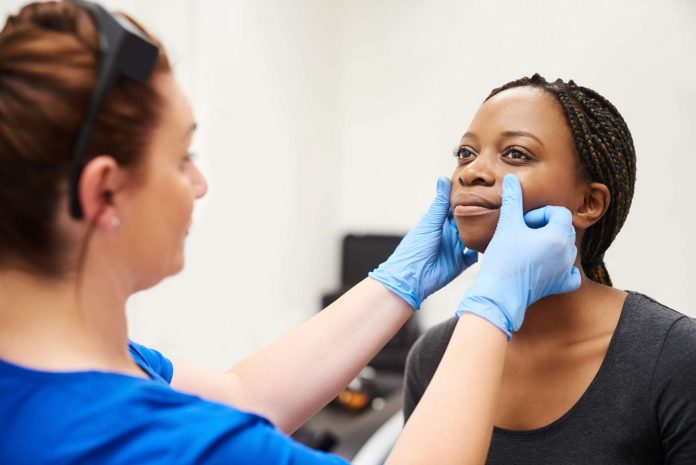Seeing a dermatologist can be a costly, time-consuming, and frustratingly drawn-out process. So it makes sense that a consultation with an online dermatologist would sound intriguing.
The idea is simple enough: You snap a couple of pics of your skin issue, answer a questionnaire, and receive a skin-clearing regimen in return. Whether that’s actually how the process plays out will depend on your skin type, specific concerns, and the service that you choose. As is so often the case, addressing a skin issue (online or IRL) is often trickier than it seems.
Here, we’ll answer some of the biggest questions you may have about the emerging (and pretty darn promising!) field of tele-dermatology.
How does an appointment with an online dermatologist actually work?
On the other hand, if you’re mainly concerned with acne or signs of aging, you might reach out to a platform like Curology, which focuses on providing customers with individual skin-care plans. Although Curology employs an array of board-certified dermatologists, physician assistants, and nurse practitioners, it doesn’t offer treatments for skin conditions other than acne and anti-aging.
Whichever service you decide best suits your needs, you’ll likely have to submit a photo or two of your skin and answer some questions about your skin health. For example, Curology asks patients about their skin concerns, skin type, and medical history through an online quiz, but other platforms may text, email, or notify their patients through a company app. You might even be asked to call your tele-derm or speak with them over a video call. Based on the info you provide, the platform will offer a diagnosis and recommend a treatment plan or regimen of topical products.
So who is actually looking at your skin to come up with your diagnosis and treatment plan? The truth is, it depends. Where some services work with board-certified dermatologists, others employ an array of medical professionals with varying levels of experience in dermatology, Adam Friedman, M.D., professor and interim chair of the department of dermatology at George Washington University, tells SELF. “Do your homework before jumping on board, because you have to pay for these [services],” he says. You can start by digging around on their website to see if they explain who exactly will be working on your case, or you might need to call the customer service line if it’s not clear.
Along those lines, it’s worth looking up your state’s regulations around telemedicine (some states only allow derms to practice telemedicine if they’re licensed in the state their patients are contacting them from, for example) and which programs your insurance will reimburse you for.
































